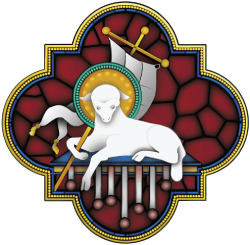This article was first published in the July 29, 1899, issue of The Living Church.
The Brotherhood of St. Andrew has just had its first mail advices from the party sent to Manila in April for work among the soldiers of the United States Army in the Philippines. Mr. John Howe Peyton, the leader of the party, writes of a conference of clergy and representatives of the Brotherhood of St. Andrew, held in Manila, May 31st. There were present the Rev. Cha[rles] C. Pierce, D.D., chaplain in the regular army; the Rev. David L. Fleming, chaplain of the 1st Colorado Vols.; the Rev. J.L. Smiley, and the Rev. Hugh Nethercott; Messrs. John Howe Peyton, W.H.J. Wilson, and George A. Kauffman. Chaplain Pierce was chosen chairman, and the Rev. Mr. Nethercott, secretary.
After the Brotherhood party had presented its credentials from the ecclesiastical and civil authorities in the United States, Mr. Peyton explained that he and his party had been sent to the Philippines for the purpose of rendering spiritual assistance to such soldiers as were not under the care of chaplains, and at the same time to endeavor to carry the church and her teachings to the people of the islands. Chaplain Pierce described the work that he had undertaken among the English-speaking and native residents of the city.
A plan of campaign for the future was then outlined. In accordance with this, Mr. Pierce, Mr. Nethercott, and Mr. Wilson will remain in Manila, and continue to develop the work of our church among the soldiers, English-speaking residents, and natives. The Rev. Mr. Smiley will go into the field with the soldiers, and have charge of the large service tent brought by the party from San Francisco. Chaplain Fleming, who is about to return with his regiment to the United States, placed at Mr. Smiley’s disposal a small service tent given him by the army committee of the Brotherhood in San Francisco. Mr. Peyton will spend his time between Manila and other points, endeavoring, in addition to work among the soldiers, to ascertain what opportunities may exist for regular mission work under the direction of the church authorities in the United States.
A large house has been rented in Manila just across the street from the principal barracks. The upstairs rooms will be used as Church headquarters, while the lower floor will be used for a chapel. On account of the high prices of all supplies, It has been impossible to equip the chapel in as churchly a fashion as might be desired. It has been necessary, for instance, to construct an altar by breaking up old packing boxes and using the planks. There will be daily Morning Prayer in the chapel, with celebrations of the Holy Communion on Sundays in both Spanish and English; Morning Prayer in English, particularly for the English and American residents, and an evening service especially for the soldiers. Thus the “Anglo-American Mission of the Holy Trinity” begins its work in Manila.
The dispensary which Chaplain Pierce opened some months ago has been moved to the mission house, in order that all Church work may be concentrated as closely as possible. A Church building fund has been established, and aid is urgently asked from church people in the United States. The American clerical and lay workers will have the co-operation of a number of the leading gentlemen of the congregation, as a provisional missionary committee, in carrying on the mission work.
Mr. Peyton writes that he has found between 1,800 and 2,000 sick soldiers in the city. Much work will accordingly be done in the soldiers’ hospitals. “We all feel buoyant with hope,” says Mr. Peyton in conclusion, “and certain that our coming here was by Divine appointment. I wish that we could have a. force of workers somewhat commensurate with the demands of the situation. There is an enormous field, giving every promise of a rich harvest for the Church.”
Information concerning this work may be obtained from, and contributions towards its maintenance may be made to, John P. Faure, Treasurer, Brotherhood of St. Andrew, 281 Fourth Ave., New York.
Episcopal mission in the Philippines began during the Spanish-American War. The first Episcopal worship service was conducted in Manila by the Rev. Charles Pierce on September 4, 1898, less than a month after U.S. troops defeated the Spanish army and occupied the city. Pierce was also assigned responsibility for U.S. Army’s Morgue in Manila, where he instituted a series of changes, including the introduction of “dog tags” that transformed the care of the remains of U.S. veterans. The Brotherhood of St. Andrew delegation played a central role in mission work among American soldiers and the city’s English-speaking residents for about two years, when they were relieved by missionaries sent from the Church Center in New York. Under the leadership of the Rt. Rev. Charles Henry Brent, who was consecrated in 1901 as the first Bishop of the Philippines, mission efforts directed at Chinese migrants and Filipinos began.The Episcopal Church in the Philippines, which separated from the Episcopal Church in 1988, is now one of the Anglican Communion’s 42 member churches.




